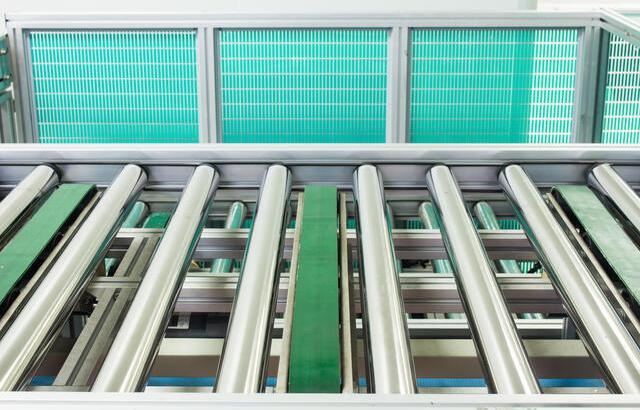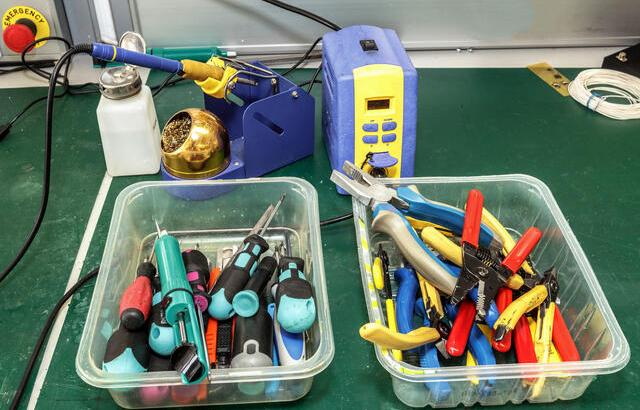Content Menu
● Introduction to SMT Stencil Machines
>> Benefits of SMT Stencil Machines
● Types of SMT Stencils and Machines
>> Types of SMT Stencils
>> SMT Stencil Machine Features
● Importance of SMT Stencil Machines in Modern Manufacturing
● Innovations in SMT Stencil Technology
● Future Trends in SMT Machines
● Troubleshooting Common SMT Errors
● Conclusion
● FAQ
>> 1. What is the primary function of an SMT stencil machine?
>> 2. How do SMT stencil machines improve production efficiency?
>> 3. What types of stencils are commonly used with SMT stencil machines?
>> 4. How do SMT stencil machines enhance product quality?
>> 5. Are SMT stencil machines cost-effective in the long term?
● Citations:
In the realm of Surface Mount Technology (SMT), precision and efficiency are paramount for achieving high-quality electronic assemblies. One of the critical tools in this process is the SMT stencil machine, which plays a pivotal role in ensuring accurate and consistent solder paste application. Investing in a high-quality SMT stencil machine can significantly enhance production efficiency, reduce defects, and improve overall product reliability. This article delves into the importance of SMT stencil machines, their benefits, and why they are indispensable for modern electronics manufacturing.

Introduction to SMT Stencil Machines
SMT stencil machines are designed to automate the solder paste application process, which is the first step in the SMT assembly line. These machines utilize stencils—thin sheets of material, typically stainless steel or nickel, with laser-cut openings that match the component pads on a Printed Circuit Board (PCB). The stencil is placed over the PCB, and solder paste is applied using a squeegee, ensuring that the paste is deposited precisely onto the pads. This process is crucial for achieving reliable solder joints and preventing defects such as bridging or tombstoning.
Benefits of SMT Stencil Machines
1. Enhanced Accuracy and Consistency: SMT stencil machines ensure that the solder paste is applied with high precision, reducing the likelihood of defects. The precise cutting of stencil apertures ensures that the right amount of solder paste is deposited onto each pad, which is essential for maintaining consistent soldering quality across the entire PCB.
2. Time Efficiency: By automating the solder paste application process, SMT stencil machines significantly reduce the time required for this step compared to manual methods. This automation allows for the simultaneous processing of multiple PCBs, increasing production throughput and enabling manufacturers to meet high-volume demands efficiently.
3. Improved Production Quality: The consistent application of solder paste achieved through SMT stencil machines minimizes defects such as solder bridges or insufficient solder joints. This leads to improved product quality and reliability, reducing the need for rework and increasing customer satisfaction.
4. Cost-Effectiveness and Scalability: While the initial investment in an SMT stencil machine may seem substantial, it offers long-term cost savings. The reduction in defects and rework translates to lower production costs and improved overall yield. Additionally, these machines are highly scalable, allowing manufacturers to adapt to varying production demands without requiring additional resources.
Types of SMT Stencils and Machines
Types of SMT Stencils
- Stainless Steel Stencils: These are commonly used for high-volume production due to their durability and resistance to wear. They are available in thicknesses ranging from 0.1 to 0.2 mm, making them suitable for a wide range of component sizes.
- Nickel Stencils: These are preferred for high-temperature environments and offer similar durability to stainless steel stencils.
- Polyimide (Kapton) Stencils: These are used for prototyping and low-volume production due to their flexibility and lower cost. They are typically thinner, with thicknesses between 0.05 and 0.13 mm.
- Step Stencils: These are designed for PCBs with components of varying heights, allowing for precise solder paste application across different component types.
- Framed vs. Frameless Stencils: Framed stencils are mounted in a frame for high-volume production, offering better positional accuracy. Frameless stencils are more cost-effective and suitable for low-volume or prototyping applications.
SMT Stencil Machine Features
SMT stencil machines are equipped with features that enhance their performance and efficiency:
- Automatic Alignment Systems: These ensure precise alignment of the stencil with the PCB, reducing errors and improving throughput. For instance, some machines like the SMTrue(TM) Vision Assist stencil printer offer precise alignment down to 12 mil ultra fine pitch components[1].
- High-Speed Squeegee Systems: These systems apply solder paste quickly and evenly, ensuring consistent paste deposition across the PCB.
- Integrated Cleaning Systems: These maintain the stencil's cleanliness, preventing solder paste buildup and ensuring optimal performance over time. The Full-auto SMT Stencil Printer, for example, offers three cleaning methods: dry cleaning, wet cleaning, and vacuum, which can be used in combination to reduce cleaning time and increase productivity[6].

Importance of SMT Stencil Machines in Modern Manufacturing
In today's fast-paced electronics industry, SMT stencil machines are indispensable for achieving high-quality products efficiently. They enable manufacturers to:
- Meet High-Volume Demands: By automating the solder paste application process, these machines can handle large production volumes without compromising quality.
- Ensure Consistency and Reliability: The precise application of solder paste ensures reliable solder joints, which are critical for the performance and longevity of electronic devices.
- Adapt to Complex Designs: Modern PCBs often feature complex designs with fine-pitch components. SMT stencil machines can handle these designs by providing precise solder paste application, even for the smallest components.
Innovations in SMT Stencil Technology
The future of SMT stencil machines is promising, with ongoing innovations aimed at improving efficiency and precision:
- Smart Stencils: These stencils contain sensors that detect pressure and temperature during the printing process, providing real-time feedback to the machine. Smart stencils also have a longer lifespan than traditional stencils, reducing the need for frequent replacements and saving money[7].
- Nano-Coating Technology: This involves applying a thin layer of hydrophobic coating to the stencil, which repels solder paste and prevents it from sticking. This technology enhances the consistency and accuracy of solder paste deposition, reducing defects like bridging[7].
- Laser Cutting Technology: Advances in laser cutting are expected to make stencil production faster and more cost-effective. Future laser cutting machines will be capable of cutting a wider range of materials, offering more options for electronics manufacturers[5].
Future Trends in SMT Machines
The future of SMT machines, including stencil machines, will be shaped by increased automation and connectivity. With the advent of Industry 4.0, there will be a greater emphasis on integrating machines to facilitate seamless data exchange and improve production efficiency[2]. This integration will enable real-time monitoring and optimization of production processes, further enhancing the role of SMT stencil machines in modern manufacturing.
Troubleshooting Common SMT Errors
Common errors in SMT assembly, such as solder bridging or insufficient solder, can often be traced back to issues in the solder paste application process. Proper stencil maintenance, including regular cleaning and ensuring the correct solder paste viscosity, is crucial for preventing these defects[4]. Additionally, using the right stencil aperture size and maintaining accurate alignment between the stencil and PCB are essential for achieving consistent solder paste deposition.
Conclusion
Investing in a high-quality SMT stencil machine is a strategic decision that can significantly enhance production efficiency, reduce defects, and improve overall product reliability. These machines are essential for modern electronics manufacturing, offering precision, consistency, and scalability. By understanding the benefits and features of SMT stencil machines, manufacturers can optimize their production processes, achieve higher yields, and maintain a competitive edge in the industry.

FAQ
1. What is the primary function of an SMT stencil machine?
An SMT stencil machine is primarily used to automate the solder paste application process in the SMT assembly line. It ensures precise and consistent solder paste deposition onto PCBs, which is crucial for achieving reliable solder joints and preventing defects.
2. How do SMT stencil machines improve production efficiency?
SMT stencil machines improve production efficiency by automating the solder paste application process, allowing for the simultaneous processing of multiple PCBs. This automation reduces assembly time and increases production throughput, enabling manufacturers to meet high-volume demands efficiently.
3. What types of stencils are commonly used with SMT stencil machines?
Commonly used stencils include stainless steel, nickel, and polyimide (Kapton). Stainless steel stencils are preferred for high-volume production due to their durability, while nickel stencils are used in high-temperature environments. Polyimide stencils are suitable for prototyping and low-volume production.
4. How do SMT stencil machines enhance product quality?
SMT stencil machines enhance product quality by ensuring accurate and consistent solder paste application. This minimizes defects such as solder bridges or insufficient solder joints, leading to improved product reliability and reduced rework.
5. Are SMT stencil machines cost-effective in the long term?
Yes, SMT stencil machines are cost-effective in the long term. While the initial investment may seem significant, they offer long-term cost savings through reduced defects and rework, improved yields, and increased production efficiency.
Citations:
[1] https://www.pentalogix.com/t/pcb-products-and-services/smt-and-through-hole-equipment
[2] https://www.zjyingxing.com/info/what-is-the-future-of-smt-machine-82208106.html
[3] https://www.indium.com/blog/stencil-printing-for-smt-assembly-success-part-2-print-metrics.php
[4] https://www.protoexpress.com/blog/common-errors-surface-mount-technology-smt/
[5] https://www.latechlaser.com/news/future-trends-in-smt-stencil-laser-cutting-tec-78495992.html
[6] https://www.smtfactory.com/What-are-the-features-of-the-Full-auto-SMT-Stencil-Printer-id46262477.html
[7] https://www.macrofab.com/blog/innovations-in-solder-paste-printing-technology/
[8] https://www.bigmateph.com/what-are-the-common-challenges-of-smt-and-how-to-overcome-it/
[9] https://m.smt11.com/blog/SMT-Field/SMT-Process-Status-and-Future-Development-Trends-2023.html
[10] https://www.manncorp.com/collections/smt-stencil-printers
[11] https://blueringstencils.com/top-5-smt-industry-trends-for-2019/
[12] https://www.circuitnet.com/news/uploads/1/CE.7.Characterizing_Transfer_Efficiencies.pdf
[13] https://fctsolder.com/wp-content/uploads/2017/08/123386-361848.smt-printing-challenges.pdf
[14] https://blog.intraratio.com/revolutionizing-smt-manufacturing-amidst-economic-challenges
[15] https://www.tronstol.com/smt-assembly/stencil-printer/
[16] https://www.verifiedmarketreports.com/blog/top-7-trends-shaping-the-surface-mount-technology-smt-equipment-market/
[17] https://www.lpkfusa.com/case-studies/smt-stencil
[18] https://www.eevblog.com/forum/manufacture/stencil-soldering-issues/
[19] https://www.linkedin.com/pulse/smt-most-advanced-technology-future-devices-adrif
[20] https://www.circuitinsight.com/pdf/impact_stencil_quality_technology_solder_paste_printing_performance_smta.pdf




















